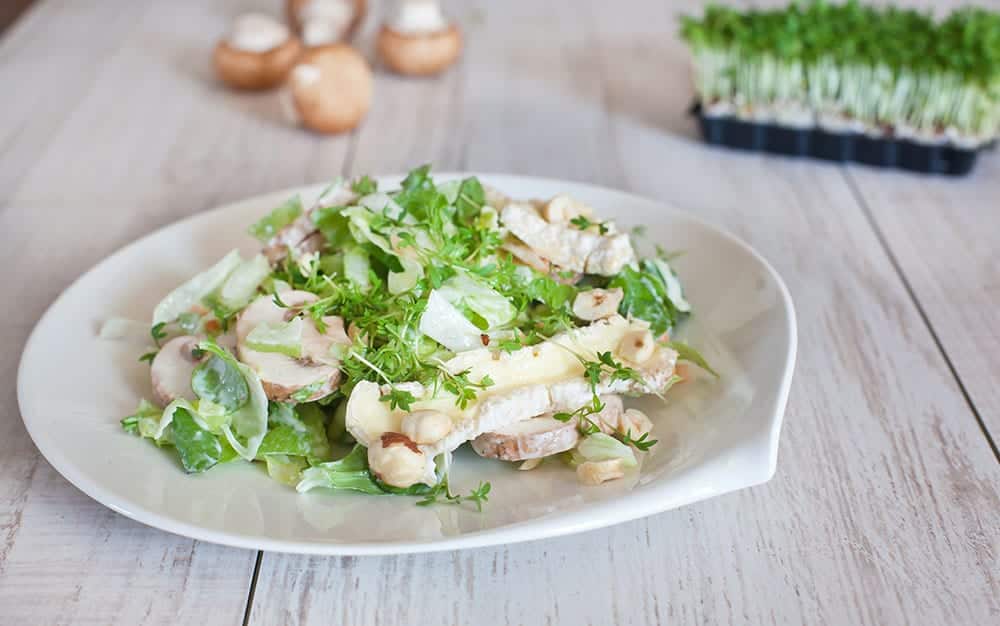You don’t need a garden to grow plants! Just a brightly lit windowsill is enough to start growing your own food. Start with microgreens with my guide on how to grow microgreens on your windowsill.

Microgreens are the young seedlings of plants – and they are really popular homegrown crops. This is because they are convenient and easy to grow. They will grow indoors and sprout all year round, and they don’t take up much space.
Secondly, they have really high nutritional content and are packed full of vitamins. But most importantly, they taste fantastic!
Microgreens are ideal for sprinkling into salads and sandwiches and adding a fresh zing to hot and cold meat and vegetable dishes.
Growing microgreens on the windowsill ensures strong flavours by keeping plants warm to produce tasty leaves. Plus they are close at hand while you are cooking.
What microgreens can I grow?

Cress is the most common microgreen but more and more plants are becoming available.
Look for seeds including salad leaves, rocket and mustard and vegetables like chard, radish, beetroot, broccoli and pea shoots. You can also grow herbs such as basil and coriander.
Make sure to buy seeds labelled for sprouting or shooting, not planting. They may also be labelled as microgreens or windowsill crops.
How to grow them:
There are three things you can use to grow microgreens. The first is with a special plastic tray, available from garden centres and seed suppliers.
These are designed to make growing really easy. They have a shallow plastic dish which is filled with water, and a grid that sits over the surface. You simply put a piece of kitchen roll over the grid, spray it with water and sprinkle the seeds on top.


Place the growing tray on the windowsill and keep the kitchen roll moist but not waterlogged. Spray the plants with water two to three times a day. The roots will grow down and reach the water in the tray, which you keep topped up from the tap.
In around three weeks your crop should be ready to harvest! You can speed up growth by adding a little liquid fertiliser once they have sprouted if you are very impatient.
But you don’t need special equipment to grow microgreens – you can make your own plastic tray with a Tupperware box or plastic carton. Line the bottom with a layer of kitchen roll and make it moist but not wet. Sprinkle the seeds over the surface and keep moist as above.


Alternatively, sow the seeds into fine potting compost in shallow seed trays. Moisten the compost and sow the seeds over the surface. Sprinkle a very fine layer of compost over the top and keep moist as they sprout.
When to Harvest:
For best results, keep in a sunny spot and and spray the plants gently with water to keep the soil or kitchen roll fairly moist. Sow a few seeds every 10 days for a continuous crop.
Use scissors to harvest the crop when the plants are around 5cm high, or when they have their first pair of leaves.
Cut straight across the stems, leaving the roots intact so the plants continue to shoot. They should produce a second crop a few weeks later.

Use the leaves straight away for the best flavour. If your crops start to get weak, empty out the trays and clean thoroughly before re-using.

Growing microgreens is super easy and requires very fewer efforts, but they definitely need special care and attention for their growth. Thanks for sharing such informative stuff which will definitely help a person for its growth.